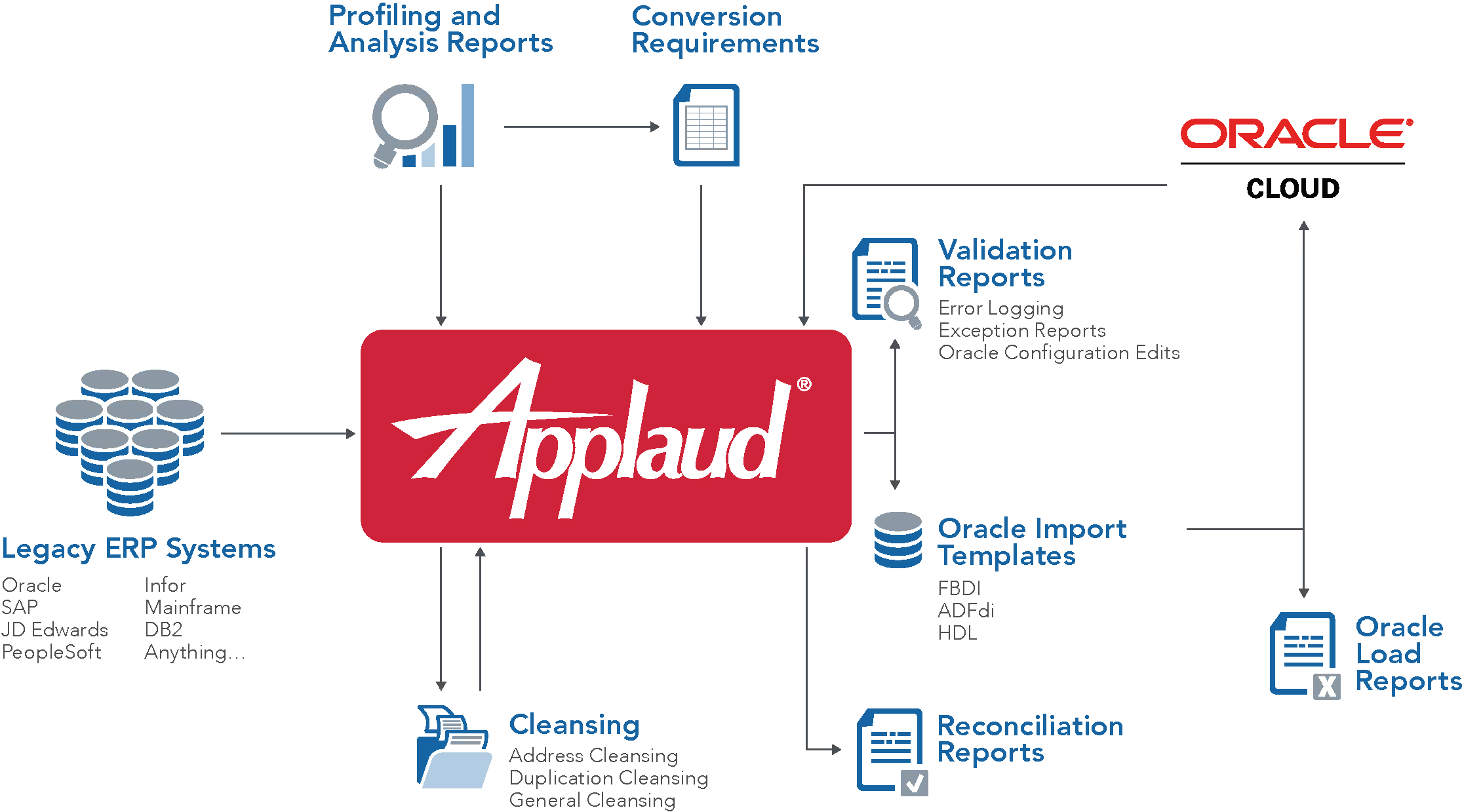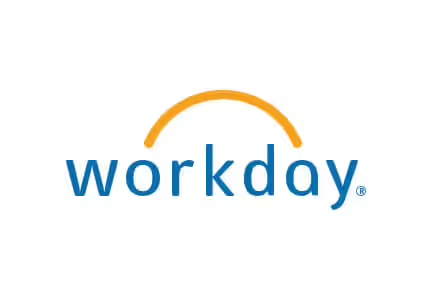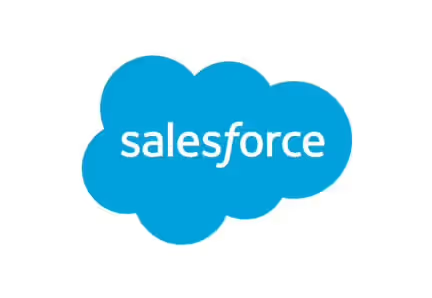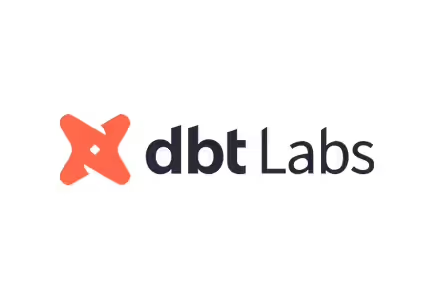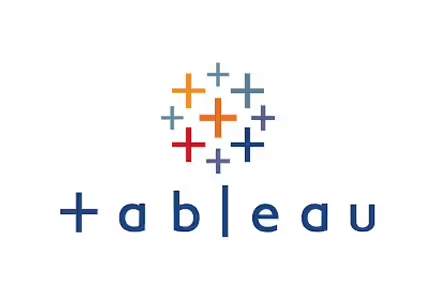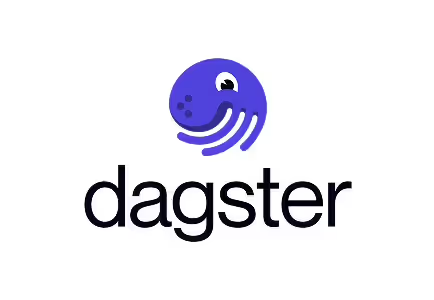Definian services and solutions

Why Data Visualization Is Important
What is Data Visualization?
With so much information being collected through data analysis in the business world today, we must have a way to paint a picture of that data so we can interpret it. Data visualization gives us a clear idea of what the information means by giving it visual context through maps or graphs. This makes the data more natural for the human mind to comprehend and therefore makes it easier to identify trends, patterns, and outliers within large data sets.
Why is Data Visualization Important?
No matter what business or career you’ve chosen, data visualization can help by delivering data in the most efficient way possible. As one of the essential steps in the business intelligence process, data visualization takes the raw data, models it, and delivers the data so that conclusions can be reached. In advanced analytics, data scientists are creating machine learning algorithms to better compile essential data into visualizations that are easier to understand and interpret.
Specifically, data visualization uses visual data to communicate information in a manner that is universal, fast, and effective. This practice can help companies identify which areas need to be improved, which factors affect customer satisfaction and dissatisfaction, and what to do with specific products (where should they go and who should they be sold to). Visualized data gives stakeholders, business owners, and decision-makers a better prediction of sales volumes and future growth.
What Are The Benefits of Data Visualization?
Data visualization positively affects an organization’s decision-making process with interactive visual representations of data. Businesses can now recognize patterns more quickly because they can interpret data in graphical or pictorial forms. Here are some more specific ways that data visualization can benefit an organization:
- Correlations in Relationships: Without data visualization, it is challenging to identify the correlations between the relationship of independent variables. By making sense of those independent variables, we can make better business decisions.
- Trends Over Time: While this seems like an obvious use of data visualization, it is also one of the most valuable applications. It’s impossible to make predictions without having the necessary information from the past and present. Trends over time tell us where we were and where we can potentially go.
- Frequency: Closely related to trends over time is frequency. By examining the rate, or how often, customers purchase and when they buy gives us a better feel for how potential new customers might act and react to different marketing and customer acquisition strategies.
- Examining the Market: Data visualization takes the information from different markets to give you insights into which audiences to focus your attention on and which ones to stay away from. We get a clearer picture of the opportunities within those markets by displaying this data on various charts and graphs.
- Risk and Reward: Looking at value and risk metrics requires expertise because, without data visualization, we must interpret complicated spreadsheets and numbers. Once information is visualized, we can then pinpoint areas that may or may not require action.
- Reacting to the Market: The ability to obtain information quickly and easily with data displayed clearly on a functional dashboard allows businesses to act and respond to findings swiftly and helps to avoid making mistakes.
Which Data Visualization Techniques are Used?
There are many different methods of putting together information in a way that the data can be visualized. Depending on the data being modeled, and what its intended purpose is, a variety of different graphs and tables may be utilized to create an easy to interpret dashboard. Some visualizations are manually created, while others are automated. Either way, there are many types to meet your visualization needs.
- Infographics: Unlike a single data visualization, infographics take an extensive collection of information and gives you a comprehensive visual representation. An infographic is excellent for exploring complex and highly-subjective topics.
- Heatmap Visualization: This method uses a graph with numerical data points highlighted in light or warm colors to indicate whether the data is a high-value or a low-value point. Psychologically, this data visualization method helps the viewer to identify the information because studies have shown that humans interpret colors much better than numbers and letters.
- Fever Charts: A fever chart shows changing data over a period of time. As a marketing tool, we could take the performance from the previous year and compare that to the prior year to get an accurate projection of next year. This can help decision-makers easily interpret wide and varying data sources.
- Area Chart (or Graph): Area charts are excellent for visualizing the data’s time-series relationship. Whether you’re looking at the earnings for individual departments on a month to month basis or the popularity of a product since the 1980s, area charts can visualize this relationship.
- Histogram: Rather than looking at the trends over time, histograms are measuring frequencies instead. These graphs show the distribution of numerical data using an automated data visualization formula to display a range of values that can be easily interpreted.
Who Uses Data Visualization?
Data visualization is used across all industries to increase sales with existing customers and target new markets and demographics for potential customers. The World Advertising and Research Center (WARC) predicts that in 2020 half of the world’s advertising dollars will be spent online, which means companies everywhere have discovered the importance of web data. As a crucial step in data analytics, data visualization gives companies critical insights into untapped information and messages that would otherwise be lost. The days of scouring through thousands of rows of spreadsheets are over, as now we have a visual summary of data to identify trends and patterns.
Conclusion
We need data visualization because the human brain is not well equipped to devour so much raw, unorganized information and turn it into something usable and understandable. We need graphs and charts to communicate data findings so that we can identify patterns and trends to gain insight and make better decisions faster.
At Definian, we understand the importance of data visualization and what it means to our clients. We provide them with user-friendly and beautiful visualization features and tools to depict their data in a clear and meaningful way. We’re here to ensure our clients have everything they need to make quick and informed decisions based on sound data that is easy to interpret. Contact our friendly team of professionals at analytiks today to hear how we can better your business.

Why Business Intelligence Is Important
Why Business Intelligence is Important
We are living in the age of technological progression. Digital advancements have completely revolutionized our everyday lives, and one of the largest impacts felt has been in the business world. Companies now have access to data-driven tools and strategies that allow them to learn more about their customers and themselves than ever before, but not everyone is taking advantage of them. Today we’re going to breakdown Business Intelligence and why it’s crucial to the success and longevity of your organization.
What Is Business Intelligence?
Before we jump into the importance, we must first understand Business Intelligence and how it applies to your company’s strategic initiatives. The term Business Intelligence (BI) refers to the technologies, applications, strategies, and practices used to collect, analyze, integrate, and present pertinent business information. The entire purpose of Business Intelligence is to support and facilitate better business decisions. BI allows organizations access to information that is critical to the success of multiple areas including sales, finance, marketing, and a multitude of other areas and departments. Effectively leveraging BI will empower your business with increased actionable data, provide great insights into industry trends, and facilitate a more strategically geared decision-making model.
To illustrate BI in action, here are a few departmental specific examples of insights and benefits that can come from its adoption and application:
- Human Resources: HR can tremendously benefit from the implementation of Business Intelligence utilizing employee productivity analysis, compensation and payroll tracking, and insights into employee satisfaction.
- Finance: Business Intelligence can help finance departments by providing invaluable and in-depth insights into financial data. The application of BI can also help to track quarterly and annual budgets, identify potential problem areas before they cause any negative impacts, and improve the overall organizational business health and financial stability.
- Sales: Business Intelligence can assist your company’s sales force by providing visualizations of the sales cycle, in-depth conversion rates analytics, as well as total revenue analysis. BI can help your sales team to identify what’s working as well as points of failure which can result in dramatically improved sales performance.
- Marketing: BI provides the marketing department with a convenient way to view all current and past campaigns, the performance and trends of those campaigns, a breakdown of the cost per lead and the return on investment, site traffic analytics, as well as a multitude of other actionable pieces of information.
- Executive Leadership: Plain and simple, Business Intelligence allows organizations to reduce costs by improving efficiency and productivity, improving sales, and revealing opportunities for continuous improvement. Business Intelligence allows members of Executive Leadership to more easily measure the organization’s pulse by removing gray areas and eliminating the need to play the guessing game on how the company is doing.
Why Is Business Intelligence Important?
Now you know what Business Intelligence is, what it’s capable of, but the question remains; why is Business Intelligence so important to modern-day organizations? The main reasons to invest in a solid BI strategy and system are:
- Gain New Customer Insights: One of the primary reasons companies are investing their time, money, and efforts into Business Intelligence is because it gives them a greater ability to observe and analyze current customer buying trends. Once you utilize BI to understand what your consumers are buying and the buying motive, you can use this information to create products and product improvements to meet their expectations and needs and, as a result, improve your organization’s bottom-line.
- Improved Visibility: Business Intelligent organizations have better control over their processes and standard operating procedures, as the visibility of these functions is improved by a BI system. The days of skimming through hundreds of pages of annual reports to assess performance are long gone. Business Intelligence illuminates all areas of your organization helps you to readily identify areas for improvement and allow you to be prepared instead of reactive.
- Actionable Information: An effective Business Intelligence system serves as a means to identify key organizational patterns and trends. A BI system also allows you to understand the implications of various organizational processes and changes, allowing you to make informed decisions and act accordingly.
- Efficiency Improvements: BI Systems help improve organizational efficiency which consequently increases productivity and can potentially increase revenue. Business Intelligence systems allow businesses to share vital information across departments with ease, saving time on reporting, data extraction, and data interpretation. Making the sharing of information easier and more efficient permits organizations to eliminate redundant roles and duties, allowing the employees to focus on their work instead of focusing on processing data.
- Sales Insight: Sales and marketing teams alike want to keep track of their customers, and most utilize Customer Relationship Management (CRM) application to do so. CRMs are designed to handle all interactions with customers. Because they house all customer communications and interactions, there is a wealth of data and information that can be interpreted and used to strategic initiatives. BI systems help organizations with everything from identifying new customers, tracking and retaining existing ones, and providing post-sale services.
- Real-Time Data: When executives and decision-makers have to wait for reports to be compiled by various departments, the data is prone to human error and is at risk of being outdated before it’s even submitted for review. BI systems provide users with access to data in real-time through various means including spreadsheets, visual dashboards, and scheduled emails. Large amounts can be assimilated, interpreted, and distributed quickly and accurately when leveraging Business Intelligence tools.
- Competitive Advantage: In addition to all of these great benefits, Business Intelligence can help you gain insight into what your competitors are doing, allowing your organization to make educated decisions and plan for future endeavors.
Conclusion
In summary, BI makes it possible to combine data from multiple sources, analyze the information into a digested format, and then disseminate the information to relevant stakeholders. This allows companies to see the big picture and make smart business decisions. There are always inherent risks when it comes to making any business decision, but those risks aren’t as prominent or worrisome when implementing an effective and reliable BI solution. Business Intelligent organizations can move forward in an increasingly data-driven climate with confidence knowing they are prepared for any challenge that arises.
The Definian team is here to improve your organization’s efficiency by leveraging your existing data. We will provide you with the tools your business needs to transform complex, unorganized, and confusing data into clear and actionable insights. This helps to speed your decision-making processes and ensures that all your business decisions are educated and backed with reliable data, and lots of it! Get in touch with the Definian team today to see how we can improve your business!

Including Data Governance as Part of your ERP Implementation
Implementing new business applications is a massive investment that requires spending significant sums defining business requirements, defining terms, configuring the solution, building RICEW objects, cleansing data, transforming data. After working on dozens of implementations, we find that organizations frequently overlook using the implementation as an opportunity to upgrade data governance to fuel long term data performance.
Upgrading data governance as part of the implementation doesn’t need to be a big lift and can be accomplished in bite-sized chunks throughout the project timeline. If an organization doesn’t consider data governance beyond the new application controls, the data will only be as good as the application was configured. This myopic approach can lead to disaster. We’re currently working with a Fortune 500 client who implemented a new HR solution without Definian’s guidance. Their implementation lacked the governance to control the data within the new system. After go-live, it quickly became impossible to get a trustworthy report from the new system in a timely manner. After several months of untangling the data and working with the business to redefine what its requirements should be, they’re finally closing in on trustworthy reporting.
The lack of governance applied to this HR solution hindered the company in two primary ways. The first is that they were unable to generate trustworthy reports for months. This challenge made it impossible for them to meet the basic HR reporting requirements for a large enterprise. Additionally, being focused on tactical data cleanup and definitions also prevented this department from being able to use the data to drive the organization forward.
The firm now has clean definitions for many of its attributes and is developing training materials to help ensure that divisions across the enterprise are using the attributes and the application consistently. The business requirements can be used to update the application and execute ongoing quality reporting. Most importantly, the governance they’re using will enable the focus to shift towards improving HR rather than trying to generate standard reports.
To avoid the pitfall this HR department encountered, the following activities are a good start to upgrading data governance during the implementation without impacting the timeline or licensing another piece of software. While the following sections may seem overwhelming at first blush, these activities can be spread out across the entire implementation and even after go-live. The important part is that they get scheduled while data is on everyone’s mind.
Kick off Data Governance - If you don’t have an active data governance organization within your firm. Set some time aside towards the beginning of the implementation to discuss data governance, what it is, and how it can be used to improve everyone’s work. If you have active data governance, it’s a great opportunity to talk through the project with the governance team and project teams together. Outline the program's goals, how governance can help with implementation, and how business can continue after go-live. The important part of the discussion is to get people thinking about data governance.
Document the Gaps and Define the Best Practices - Identify current data governance strengths, weaknesses, gaps, and risks, and define future state data governance best practices. While working to identify the gaps and best practices, start to identify the key people who will be the driving force behind ongoing data governance. The exact roles vary from organization to organization, but some common roles are executive champion, data governance manager, data governance council, and data steward.
Define a Data Governance Charter - Similar to the program charter that is created as part of the Oracle implementation, create a data governance charter to keep everyone on the same page about how we’re going to make sure data is enabling the organization to meet its needs. The charter usually contains the following sections: problem statement, responsibilities, goals, benefits, scope, assumptions, dependencies, activities, deliverables, risks, and critical success factors.
Collect the Metadata - There will be many meetings discussing what is an active customer, what is a line of business, what is an item type, and how to classify an item for a given item type. Don’t lose that knowledge in the opacity of the system. Make sure the decisions are documented and create a library that contains the terms, requirements, and all the metadata that you can. This will speed up future development and the potential future implementation of governance software.
Build out the Organizational Framework - Formalize the resourcing decisions made while documenting the current gaps to create the data governance organizational framework. Identify each of the important roles that will make up the data governance council and office and their responsibilities.
Assemble a Data Governance Handbook - If your organization doesn’t already have a handbook that contains the organization’s policies, procedures, roles, and responsibilities for data governance, define what should be included in your organization’s data governance manual. This handbook is the go to authority for all things data governance. It can be quite difficult to create, but it doesn’t have to be done in one go. It is also a living document that is meant to evolve with the business over time. The handbook frequently contains the mission, guiding principles, organizational framework, roles, responsibilities, communication framework, metadata catalog, policies, standards, metrics, processes, tools, and resources. If there is something data governance related, it or a reference to it should be found within the handbook.
Create a Communication Matrix - Effective communication is critical for a successful data governance program. To clarify communication protocols, create the protocol for how to communicate data governance policies, procedures, issues, and updates. The one created by Robert Seiner, with his non-invasive data governance approach, is excellent. It is recommended to work on defining the communication matrix during the initial set-up of the data governance organization, as it provides a mechanism for defining a clear communication structure — heading off the game of telephone before it starts.
Define the Data Governance Scorecard - Define the metrics and mechanisms that will let you know if data governance is effective at the organization. These metrics align with General Accepted Information Principles (GAIP) and measure data infrastructure, security, quality, and financial goals. They can be about reducing the number of legacy databases, increasing employee skills, and making sure that the costs are in line with the committed return on investment.
Build out the roadmap - Chances are, at the time of go-live for the main implementation there will be many activities and sections that still need to be completed or updated within the governance handbook. Create a roadmap to keep improving and building data governance operations. This is a journey and not a project. Defining the next steps will continue to provide a vision for how the organization can better serve its constituents.
Establish data governance council meeting cadence - Getting the data governance council together is important to keep the data improvement momentum going. During the first meeting, show the group where the data has been, how far the organization has come, and where it is going. The format for the meeting depends on your organization's culture. The important pieces are that all data related initiatives are discussed, and issues are identified, discussed, and solved.
While these deliverables may seem like a lot, if they are spread across an implementation or at least planned to be executed at the tail end of the implementation, they are manageable. Additionally, you will be able to get more out of your new system and recognize benefits over the long term. We see that organizations that have even a minimal data governance operation at the time of go-live have the mechanisms in place to measure what’s important, communicate issues, and quickly come up with resolutions.
If you have questions about data, data governance, or data migration, let’s spend 30 minutes together to go through your questions and approach on your project.

IDMP Compliance: Business Priority, Governance Imperative
The ISO Identification of Medical Products (IDMP) standard is one of the most complex data challenges facing life sciences companies today. The regulation requires unique identification of pharmaceutical products using a standardized language to improve the exchange of data between pharmaceutical companies and global regulators.
Meeting the full scope of the IDMP regulation (which includes five distinct standards) will require ongoing access to accurate, high-quality, and trustworthy data collected from multiple systems across your enterprise. Good data governance is critical. And it’s why we’ve partnered with Informatica to deliver a comprehensive solution to help you support better data stewardship, data quality, and data monitoring.
An End-to-End Data Governance Solution
Definian has designed a comprehensive data governance solution to address IDMP compliance from start to finish. We begin by establishing business glossaries that define terms so that data users across the enterprise share a common language. We then identify critical data elements from across your source systems and display the lineage, owners, and stewards of that data in a searchable data catalog. We also establish data quality rules and metrics to apply against your data so that you can easily monitor governed assets with 3 compliance dashboards. To simplify reporting with consistent data values, we harmonize your reference data according to IDMP rules. Our IDMP solution is based on Informatica Axon, Enterprise Data Catalog, Informatica Data Quality, Informatica Reference 360 and Informatica MDM (see Figure 1).

Definian has experience delivering data governance solutions that help organizations improve data management processes to meet stringent compliance regulations. We work across policy, data, and technical domains to help you achieve results faster by digging deep into data policies to deliver the strategic solutions your organization needs to transform regulatory compliance into a business differentiator.
Establish a Foundation for Innovation
As the regulatory landscape continues to grow more complex, life sciences organizations are seeking better ways to adapt and respond. By establishing a sustainable data governance framework now, you can meet new imperatives and priorities with clarity and intelligence, integrating high quality, traceable data into your organization’s ongoing compliance programs to better support its business strategy, mission, and goals.
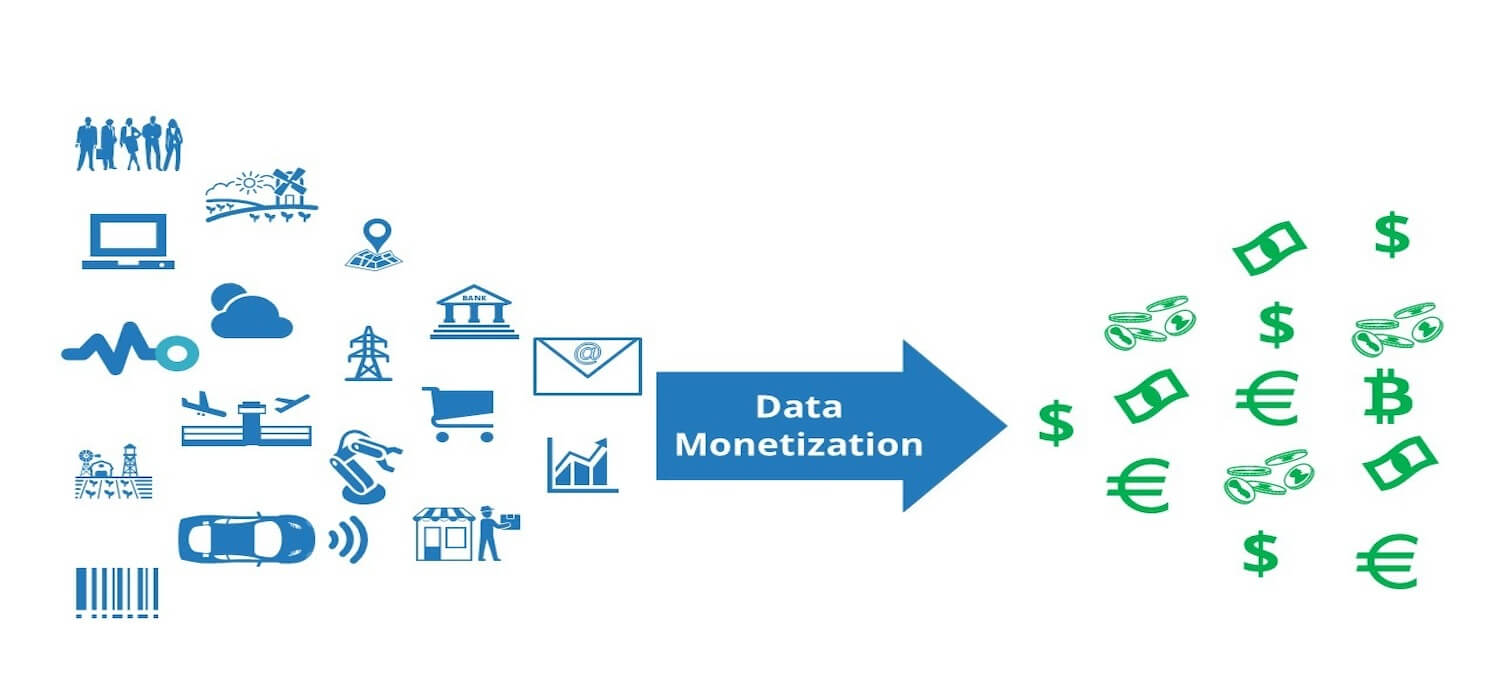
What is Data Monetization?
Data Governance programs have lacked business adoption because there is often a limited tie-in with financial benefits. Let’s face it, if the regulators are not breathing down your neck, it is hard to get senior management to continue to sponsor data governance.
We define Data Monetization as follows:
Data Monetization leverages data and information to expose opportunities to increase revenues, reduce costs and drive competitive advantage while mitigating risk.
Here are some use cases for Data Monetization:
- Grow Revenues – A retailer improves cross-sell and up-sell opportunities based on a single view of the household
- Reduce Costs – A manufacturer improves the quality of billing addresses to reduce Accounts Receivable and Working Capital
- Manage Risk – A bank reduces credit risk by establishing a unified view of counterparty risk across affiliates and subsidiaries
Data Monetization is a cross-functional discipline that draws from best practices in Data Management, Technology, Law and Finance.
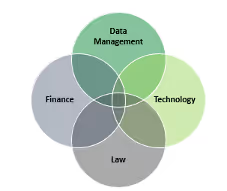

Data Holds Organizations Back
Data Holds Organizations Back
Data is a critical asset for every organization, especially in the modern era. Despite its recognized criticality, many organizations fail to properly manage data as a value-driving asset. According to McKinsey, organizations spend 30% of their time on non-value added tasks because of poor data management; further causing issues, 70% of employees have access to data that they should not be able to see.
Definian focuses on the foundational aspects that strengthen data management at your organization. Our process is geared to render data compliant, clean, consistent, credible, and current. With these measures adequately addressed, you will be confident that your data is secure, increasing in value, and powering insights across the enterprise.
Why Data Impacts Performance
DEGRADATION
Depending on the entity, data degrade at a rate of 4-20% a year. Without active mitigation and monitoring, data will constantly decrease in usefulness.
QUALITY
An insufficient data quality strategy plus growing data volumes means that inaccurate data are affecting your analytics and are causing a manual data cleanup burden on your team.
INCOMPLETE METRICS
The principle of what’s not measured is not managed applies to data. By not tracking important data-related metrics, organizations don’t know the impact of ongoing data management gaps.
SECURITY
Without role-based security policies that meet regulatory, contractual, and ethical requirements, organizations put themselves at significant risk.
COMPLEXITY
As data velocity accelerates and unstructured data is continuously entered into the system, data lakes start to turn into data swamps.
LACK OF STANDARDS
Data entered and maintained by different people, departments, and applications can slow operations and pollute analytics.
SILOS
Data silos that persist between departments slow business operations, increase integrity issues and prevent the data access that is needed.
LINEAGE
When data moves across the landscape, its requirements change. The smallest error or update can have significant ripple effects.
CULTURE
An organization that is not prepared for technological change will be ill-equipped to effectively manage their data in the future.
Modernizing Data Landscapes Since 1985
Prepare Your Organization
- Assess your current data landscape, processes, and governance policies
- Develop a tailored data improvement roadmap
- Help prepare for the organizational change to spur adoption of the new polices and processes
Execute Improvement Roadmap
- Ensure the data vision aligns with business objectives
- Facilitate organizational change
- Implement technical components for data security, quality, interoperability, etc.
Secure data across the organization
- Instill confidence that the team has access to quality data when they need it
- Assure that your data are compliant with regulatory, contractual, and ethical obligations
- Promote a culture that uses data to improve operations, increase sales, and reach better decisions across the enterprise
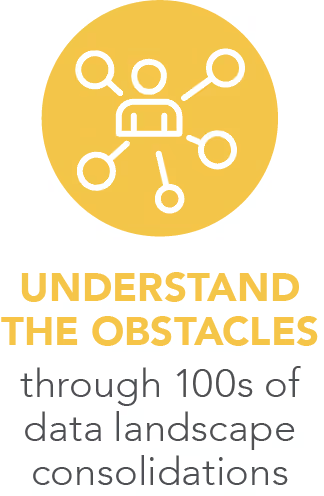




Introduction to Data Migration Services for Ivalua
We Take the Risk Out of Data Migration
Whether it is Source-to-Pay, Strategic Sourcing, or Procure-to-Pay, the implementation of an Ivalua system is a major undertaking and data migration is a critical and risky component.
- Data from multiple legacy sources needs to be extracted, consolidated, cleansed, de-duplicated, and transformed before it can be loaded into Ivalua.
- The data migration process must be repeatable, predictable, and executable within a specific timeframe.
- Issues with data migration will delay the entire implementation or Ivalua will not function properly.
- If the converted data is not cleansed and standardized, the full functionality and potential Ivalua has to offer will not be realized.
Data Migration Challenges
Many obstacles are encountered during an Ivalua implementation, each increases the risk of project overrun and delay. Typical challenges include:
- High levels of data duplication across disparate legacy systems.
- Unsupported and/or misunderstood legacy systems, both in their functionality and underlying technologies.
- Legacy data quality issues – including missing, inconsistent, and invalid data – which must be identified and corrected prior to loading to Ivalua.
- Legacy data structures and business requirements which differ drastically from Ivalua’s.
- Frequent specification changes which need to be accounted for within a short timeframe.
The Definian Difference
PDefinian’s Applaud® Data Migration Services help overcome these challenges. Three key components contribute to Definian’s success:
- People: Our services team focuses exclusively on data migration, honing their expertise over years of experience with Applaud and our solutions. They are client-focused and experts in the field.
- Software: Our data migration software, Applaud, has been optimized to address the challenges that occur on data migration projects, allowing one team using one integrated product to accomplish all data objectives.
- Approach: Our RapidTrak methodology helps ensure that the project stays on track. Definian’s approach to data migration differs from traditional approaches, decreasing implementation time and reducing the risk of the migration process.
Applaud Eliminates Data Migration Risk
Applaud’s features have been designed to save time and improve data quality at every step of an implementation project. Definian’s proven approach to data migration includes the following:
- Experienced data migration consultants identify, prevent and resolve issues before they become problems.
- Extraction capabilities can incorporate raw data from many disparate legacy systems, including mainframe, into Applaud’s data repository. New data sources can be quickly extracted as they are identified.
- Automated profiling on every column in every key legacy table assists with the creation of the data conversion requirements based on facts rather than assumptions.
- Powerful data matching engine that quickly identifies duplicate information across any data area including supplier, item, contract, and manufacturer records across the data landscape.
- Integrated analytics/reporting tools allow deeper legacy data analysis to identify potential data anomalies before they become problems.
- Cleansing features identify and monitor data issues, allowing development and support of an overarching data quality strategy.
- Development accelerators facilitate the building of load files and support Ivalua’s nimble solution.
- Process that ensures the data conversion is predictable, repeatable, and highly automated throughout the implementation, from the first test cycle through go-live.
- Stringent compliance with data security needs ensure PII information remains secure.
- Our RapidTrak methodology provides a truly integrated approach that decreases the overall data migration effort and reduces project risk.


Data Monetization Blog - Insurance Industry Perspective
Every organization has areas ripe for driving monetization from internal data and information. Take the Insurance Industry as an example.
The success of an insurance company lies in its ability to assume and diversify risk. This means being good at underwriting, pricing, and managing risks and claims which will effectively drive market share and maximize returns on reserves. But let’s look at some common claims related data issues that may be impeding these initiatives.
- Mismatches of Losses against Written Premiums: Losses may be being paid where the corresponding premium isn’t being collected, or perhaps for business agents are not licensed to write. (i.e. state limitations) This can impact the adequacy of existing rates and future ratemaking. It can also lead to inaccurate DOI reporting.
- Incorrect Cause of Loss and Coverage Combinations: Claims adjusters may be picking invalid combinations. (e.g. Coverage Type is Bodily Injury, Cause of Loss is Hail) These types of issues create inaccurate loss reporting which directly impact loss reserves and loss ratios. Furthermore, the accumulation of incorrect data results flawed development patterns used in actuarial models.
- Overpayment of losses on Policy Limits: The company may be paying out too much in losses, due to improper governance of losses being matched to incorrect sub-limits for bundled policies. Again, this can lead to the some of the same issues noted above.
Working with your business we can help you build and substantiate business cases to support your existing priorities, or help you identify areas of opportunity. Examples might include increasing revenue per policy holder, accurately recording the average cost per claim, maximizing return on surplus, or lowering loss ratios.
Here is our 5-step Data Monetization process to identify and drive your value-added opportunities:
- Identify the relevant stakeholders to gather input and insight
- Review existing or help build out new use cases to grow revenues, reduce costs, or manage risk
- Develop business cases by identifying root causes and critical data drivers, establishing assumptions and quantifying financial impacts
- Execute each business case, by implementing data governance and data management activities
- Track benefits realized from executable data monetization activities against planned assumptions
Let us help you reach your potential!

Workday Data Migration Services for Government
How will you ensure your data is Workday ready?
Workday’s functionality will transform and accelerate your finance and HCM operations. However, the implementation will only be successful when your data is Workday ready. Data is a strategic asset that drives organizational performance and the implementation’s critical path. Data issues will delay your implementation and the effectiveness of your Workday solution. To maximize the efficacy of Workday, ensure the implementation timeline holds true, and each tenant build is successful, data needs to be delivered through a predictable, repeatable, and highly automated process.
- What is your data migration methodology?
- Do you have resources to document, build, maintain, and execute the data migration?
- Are your data preparedness tools and templates built to get you ahead of data issues?
- How will you know that your data is both functionally and technically correct prior to loading into Workday?
Why do governments choose Definian to ensure their data is Workday ready?
Definian's Workday data migration specialists, methodology, and Applaud® data migration software seamlessly fit into Workday’s implementation standards
- Enable SMEs to focus on improving the organization and the efficacy of the Workday solution
- Comprehensive reporting ensures data audit, cleansing, and reconciliation metrics are captured at department and project levels
- 100’s of pre-configured Workday specific validations accelerate data timelines and get the team ahead of data issues
- Robust payroll parallel analysis ensures that Workday payroll processes match legacy processing to the penny
- Access mainframe EBCDIC data without having to program a single line of code

Download the PDF and contact us for more information.

Data Literacy – Underpinning Data Monetization
Leveraging one’s data literacy skills allows them to identify the various use cases to grow revenue, reduce costs, or manage risks for successful Data Monetization. Healthcare is an industry were Data Literacy and Management has been constantly growing and maturing due to the state and federal mandates to support a Health Insurance Payor’s member.
Health Insurance Payors understand that members have a great deal of options to choose from when selecting their carrier year over year; many companies anchor their business motto on the member experience. This translates to Health Insurance Payors striving to excel at marketing, claims management, member appeal process efficiency, and ensuring that members are reaping the benefits provided to them through state and federally mandated regulations. Some examples where one may find that the organization’s mantra of improving the member’s experience may be impacted follow.
- Improper claim denials due to invalid or incorrect provider NPI, or perhaps the providers are not credentialed accurately, and out-of-network charges are applied for in-network providers may increase member appeals
- A member’s physical address changes to a nearby state, which is still within the insurance payor’s jurisdiction. The member may suffer from a medical condition that has specific mandates for care depending upon the state where the member resides. If the address metadata is not accurately captured or updated timely, the member may be denied claims for medication, supplies, or services that would otherwise be covered in adherence with the state mandates.
Working together, Definian can review your organization’s priorities, identify monetization opportunities, and corroborate use cases that resonate with business, leadership, and technology teams. We will work with you to leverage and expand your data literacy by considering possibilities such as complying with state and federal regulations related to provider credentialing, promoting growth initiatives through member data quality improvements, or reducing administrative costs by retiring or sunsetting applications and reports that have reached the end of their useful life.
Our team will help your organization trace the value of your data from use cases through business drivers to quantify the value of your program, affording you the opportunity to showcase your Data Monetization Investments. Reach out to us today!

Data Governance Playbook: The mission statement for your data
Businesses start with an idea. Buildings start with a blueprint. Your Data Governance plan starts with a playbook. Data Governance is an information management approach that establishes decision rights regarding information. Often designed to mitigate regulatory, compliance, and legal risk exposure for your organization, a data governance program builds in the collaborative tools to help you deliver better products or services, support the Software Development Life Cycle (SDLC), improve your operational effectiveness, and enable more informed decision-making up to the executive level.
Your Data Governance Playbook is the map for your Data Governance plan: the high-level policies and standards that will be the mission statement for managing your information through its lifecycle. Built for business professionals who manage or work with information—data stewards, business analysts, and subject matter experts—as well as IT professionals and compliance officers, the Playbook is your record of why each protocol exists, which standards encapsulate it, and the processes you use to make it happen.
Data Policies, Standards and Processes
Your Data Governance Playbook documents each step in the Data Governance journey:
- Data Governance Policies provide a high-level framework for decisions regarding data;
- Data Governance Standards provide detailed information on how Data Governance Policies should be implemented. Each Data Governance Policy relates to one or more Data Governance Standards;
- Data Governance Processes provide detailed procedures to implement Data Governance Standards. Each Data Governance Standard relates to one or more Data Governance Processes.
Definian Defines Your Data Governance Map
Definianl’s services can expertly guide you through the entire data governance process, from initial recommendations, mentoring, regulatory compliance, and data stewardship training through advanced implementation. We bring a 360-degree view of your information to your Data Governance Playbook design, treating your data not just as a day-to-day tool, but an enterprise asset and the source of your institutional knowledge.

Data Migration Services For Oracle Cloud
We Take the Risk Out of Data Migration
Whether it is Human Capital Management (HCM), Enterprise Resource Planning (ERP) Finance, or Supply Chain Management (SCM), the implementation of any Oracle Cloud application is a major undertaking and data migration is a critical and risky component.
- Data from multiple legacy sources needs to be extracted,consolidated, cleansed, de-duplicated, and transformed before it can be loaded into the Cloud applications.
- The data migration process must be repeatable,predictable, and executable within a specific timeframe.
- Migrated data will require reconciliation against the legacysource data after loading to the Cloud.
- Issues with data migration will delay the entire implementation or Oracle Cloud will not function properly.
- If the converted data is not cleansed and standardized, thefull functionality and potential Oracle has to offer will not be realized.
Data Migration Challenges
Many obstacles are encountered during an Oracle Cloud implementation, each increases the risk of project overrun and delay. Typical challenges include:
- High levels of data duplication across disparate legacy systems.
- Unsupported and/or misunderstood legacy systems, both in their functionality and underlying technologies.
- Legacy data quality issues – including missing, inconsistent, and invalid data – which must be identified and corrected prior to loading to Oracle Cloud.
- Legacy data structures and business requirements which differ drastically from Oracle’s products.
- Frequent specification changes which need to be accounted for within a short timeframe.
The Definian Difference
Definian’s Applaud® Data Migration Services help overcome these challenges. Three key components contribute to Definian’s success are:
- People: Our services team focuses exclusively on data migration, honing their expertise over years of experience with Applaud and our solutions. They are client-focused and experts in the field.
- Software: Our data migration software, Applaud, has been optimized to address the challenges that occur on data migration projects, allowing one team using one integrated product to accomplish all data objectives.
- Approach: Our RapidTrak methodology helps ensure that the project stays on track. Definian’s approach to data migration differs from traditional approaches, decreasing implementation time and reducing the risk of the migration process.
Applaud Eliminates Data Migration Risk
Applaud’s features have been designed to save time and improve data quality at every step of an implementation project. Definian’s proven approach to data migration includes the following:
- Experienced data migration consultants identify, prevent and resolve issues before they become problems.
- Extraction capabilities can incorporate raw data from many disparate legacy systems, including mainframe, into Applaud’s data repository. New data sources can be quickly extracted as they are identified.
- Automated profiling on every column in every key legacy table assists with the creation of the data conversion requirements based on facts rather than assumptions.
- Powerful data matching engine that quickly identifies duplicate information across any data area including employee, dependent, customer, and supplier records across the data landscape.
- Integrated analytics/reporting tools allow deeper legacy data analysis to identify potential data anomalies before they become problems.
- Cleansing features identify and monitor data issues, allowing development and support of an overarching data quality strategy.
- Hundreds of out-of-the-box pre-load validations identify issues within the legacy data and its compliance with Oracle configuration prior to the upload into Oracle.
- Development accelerators facilitate the building of Oracle’s FBDI, ADFdi, and HDL load formats.
- Process that ensures the data conversion is predictable,repeatable, and highly automated throughout the implementation, from the test pods through production.
- Stringent compliance with data security needs ensure PII information remains secure.
- Our RapidTrak methodology provides a truly integrated approach that decreases the overall data migration effort and reduces project risk.
